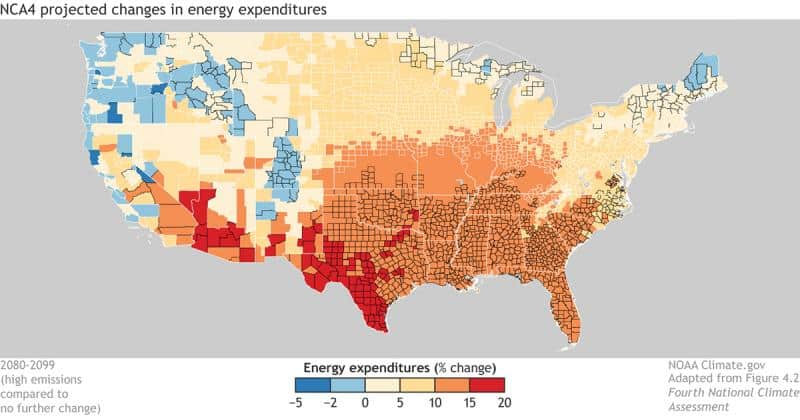Electricity bills are about to get more expensive. Global warming has been increasing, causing environmental, economic and social consequences. The rising temperatures that climate change will cause in the coming years will affect infrastructure, energy usage and fuel availability, causing increased financial costs. As a result, utilities will have to invest in grid upgrades and power plants at an estimated cost of between $70 billion and $180 billion to cope with the usage.

For example, if you look at your bill throughout the year, you’ll see an increase in consumption and price in the summer due to air conditioning use. According to a study by a researcher at the University of Michigan, the cost of electricity in the United States will increase more than economists expected, with an estimated increase of billions of dollars. But why?
- Cooling a warm world: There will be greater demand for air conditioning, which will increase the energy demand. At the same time, higher temperatures could reduce the efficiency of energy generation and delivery.
- Building and improving infrastructure: There will be an investment in infrastructure to meet increased demand.
The cost-of-living crisis will continue to be present in U.S. households due to projected increases in energy demand due to the ongoing weather crisis. According to the Census Bureau, 1 in 5 U.S. adults lived in homes where they could not pay all of their utility bills in 2020. Families were primarily affected by rising utility costs during the covid-19 pandemic. Furthermore, the Census Bureau’s monthly Household Pulse Survey, conducted in April 2020, found that nearly one-third of adults live in households where it has been somewhat challenging to pay regular expenses (30.5%).
National Climate Assessment (NCA4)
Taken from the fourth NCA4 report, released in November 2018, the attached map shows projected changes in U.S. electricity expenditures for 2080-2099 compared to today. Assuming the world continues to rely primarily on fossil fuels and contributes to the concentration of carbon dioxide in our atmosphere.

As we can see from the map made by the NCA4, the highest risk of increased energy costs is likely to occur in the southeastern United States, where the costs of additional cooling are projected to be greater than the savings from reduced heating bills. In other words, the models project the risk that increased demand for air conditioning will outweigh heating savings, meaning that national energy spending could increase overall. The concern of scientists is that the current infrastructure could not support the energetic demand projected, so in the short term, everyone turning on the air conditioning risks a blackout.
Extreme weather conditions have impacted all sectors because of their contribution to rising commodity prices, driving up the costs of heating, electricity, and even coffee. Renewable energies are helping to curb the rise in electricity prices. As revealed by Dr. Simon Cran-McGreehin of the ECIU, “Using renewable electricity and insulation as part of the transition to grid zero are the quickest ways to reduce our dependence on expensive fossil fuels traded on volatile international markets.”. As it has been pointed out, solar energy will become increasingly important over the years, which is why we at brightEra can help you begin your energy independence. Make an appointment with our experts to help you on your solar journey.
Source: Proceedings of the National Academy of Sciences and NOAA Climate.gov
